So, you have decided that you want to explore digital signage and might be wondering what kind of screen you should buy and what you need to consider when looking for the best digital signage display. Not to worry, we at Databeat have got you covered. In this article, we lay out what features you should consider when acquiring a digital signage display.
I would suggest the first two questions you need to ask yourself are these:- What type of content are you going to be primarily using the screen for?
- Where will the screen be located?
If you can answer these questions, great! You are a lot closer to getting your next screen than you might think. We will now explain the importance of these questions as we move through the features you should look for.
Size and dimensions
A basic, but important feature of your next signage display is the size of the display. The screen needs to be large enough to convey your content and messaging efficiently. Will you try to reach customers passing by your storefront or window on the street, you might consider a larger screen to catch people's attention and draw them into the store.
However, in another example, say you have a table or section with different electronics for sale and want to run ads for each product separately. In this specific example, several smaller screens next to each product detailing the features in form of videos and images of each product might be more useful to help a customer make decisions.
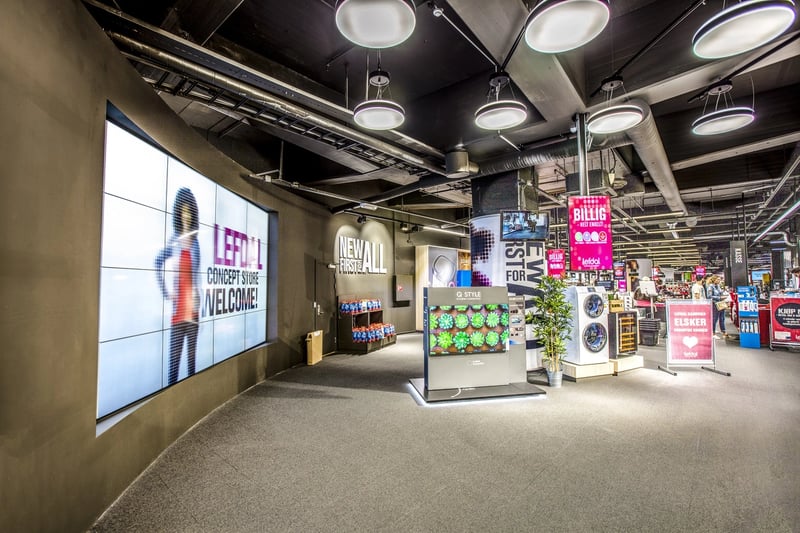
Videowall
While we are on the topic of size, it seems like a suitable time to mention videowalls. These are usually made up of several screens connected to form one giant screen. This is an effective digital signage solution that is simply impossible to miss.
It is extremely versatile, and can be used for example in an art exhibition, in your lobby, or imagine a car showing a large screen behind the car showing casing the features and specs of the car. The sky's the limit here.
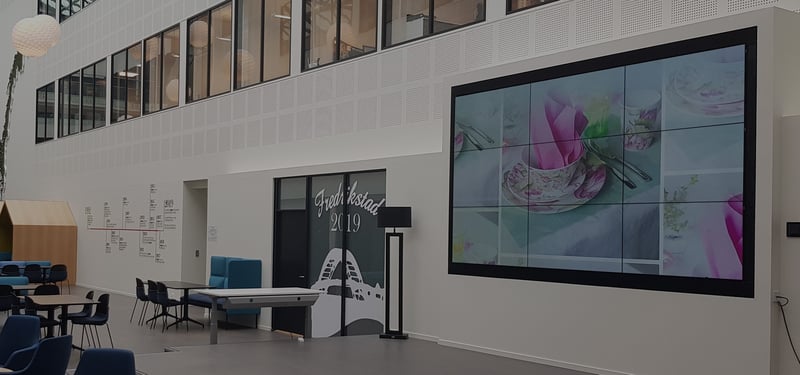
Resolution
4K video aka Ultra HD (3840 × 2160 px) looks great, and in some cases with larger screens, it is certainly particularly useful. However, you need to ask yourself if this is a necessary feature. You need to think about the following:
- The size of the screen.
- The content you are going to be uploading on the screen. If your content is in Full HD (1920×1080 px), then there is no need for a higher resolution screen.
If the screens will be used to market to someone far away, like the banners you see at sporting events, you might need a big and bright screen, but the high resolution will likely be lost due to the distance.
However, if it is for a videowall or larger screens people walk closely by you want to choose a higher resolution, so the picture does not appear pixelated.
Brightness
This is an important feature depending on where your screen will be displayed. Have you ever noticed that when you are outside on a bright day, you need to increase the brightness of your phone screen? The same thing applies if you intend to display your screen in a location where it contends with the brightness of its environment. The brightness of the screen is measured in NITS.
Standard nits for indoor screens start around 300 nits, or higher depending on the brightness in the room.
A screen placed outdoors will probably require 2000-4000 nits during the daytime.
Screens placed inside, but in direct sunlight, or a screen facing out through a window that picks up reflection from the sun, will also require nits similar to an outside screen.
The general rule of thumb is; the brighter the environment, the higher the nits.
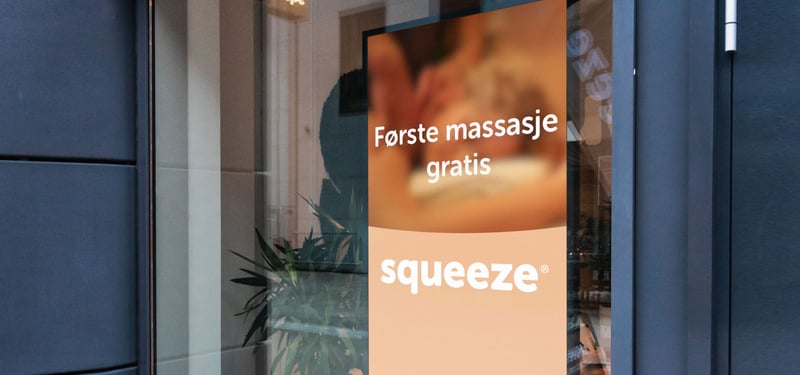
Durability
You might be wondering why you need to buy a screen specifically for digital signage. Why can you not simply use any odd tv you have lying around? The answer: Durability.
A standard consumer tv screen, like one most people, have in their living room, is not meant to be on for more than 4-6 hours a day. Over time, usage will begin to dim the backlight of the screen which changes the colors.
The durability of your screens depends on your needs and intended usage. Usually, you will have the option of choosing a 16/7 or a 24/7 screen.
- A 16/7 screen are intended for usage 16 hours a day, 7 days a week
- 24/7 refers to screens made for usage 24 hours a day, 7 days a week
Outdoor screens
Will the screen be placed inside or outside? We have already covered the difference in brightness needs, however, if your screen is placed outside there are other factors to consider. If you plan to place your screen outside you should buy an outdoor digital signage display specifically designed for being outside.
Some features to look for:
- Auto adjust brightness
- Water & dust resistance - look for the IP code to see specifics
- Protective glass cover - look for the IK rating to tell you how resistant the screen is to external forces
- Anti-reflection
![]()
Interactive
Is the screen going to be used for interactive purposes? Examples would be Mcdonald's self-checkout screens or interactive touch boards. Here there are also a variety of features to look for depending on your needs:
- Touch screen
- Card reader / NFC reader for contactless payment
- Printer - for receipts, queue tickets, etc.
- QR / barcode scanner
- Antibacterial coating
- Connectivity options - Wireless screen sharing, HDMI, USB, DP, WIFI
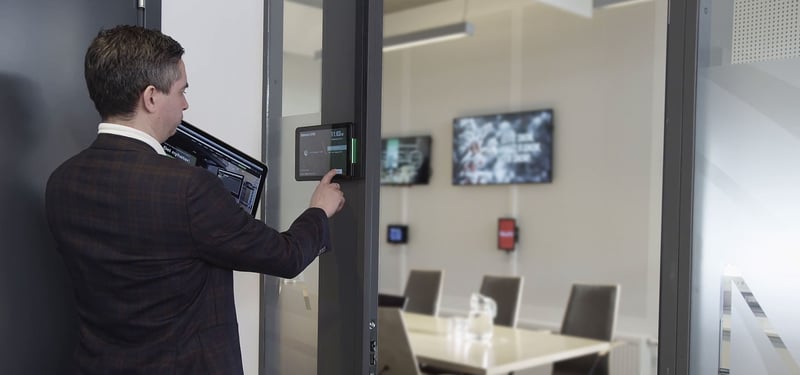
Software and connectivity
You need a way to manage the content on your screens. Ideally, you can manage your content remotely and not have to physically be in the same location as the screen, especially if you have multiple screens at various locations. Look for a screen with built-in WIFI, or ports for HDMI/DP connection.
Newer digital signage screens come with basic built-in software for managing content. Many also have app integration for other digital signage software or connectivity options for an external player through HDMI/DP. DatabeatOMNI is software for publishing and managing content and can be used with any digital signage display, either through an integrated media player or with our external media player, Databeat OMNIplay3.
Read more: The main benefits of DatabeatOMNI
Dual screen
Samsung has a series called OMN - D which features displays on both sides, so you can display one side facing a window to the street, while another side is facing in towards the store. Although there are not that many of these types of screens currently on the market, this is a fantastic way to maximize space as the screen is relatively thin, and each side can be adjusted to its corresponding environment.
Pricing
The price will depend on your needs, which is why the questions asked at the beginning of the article are so important. You want to cover your bases and get the features necessary for your needs and intended use while keeping in mind that you do not need a touch screen if all you are going to show are commercials. Do you need to spend more for a 24/7 screen, or are you only going to have the screen on during standard business hours?
Conclusion
To round off this article the most important part when buying a digital signage screen is knowing the specifics of your intended usage of the screen and the content you want to display. If you have this information, you will have a much easier time navigating and selecting the perfect digital signage screen with the features you need.
If you want further help in selecting a digital signage display or have questions, feel free to contact us at Databeat, as we are eager to help!
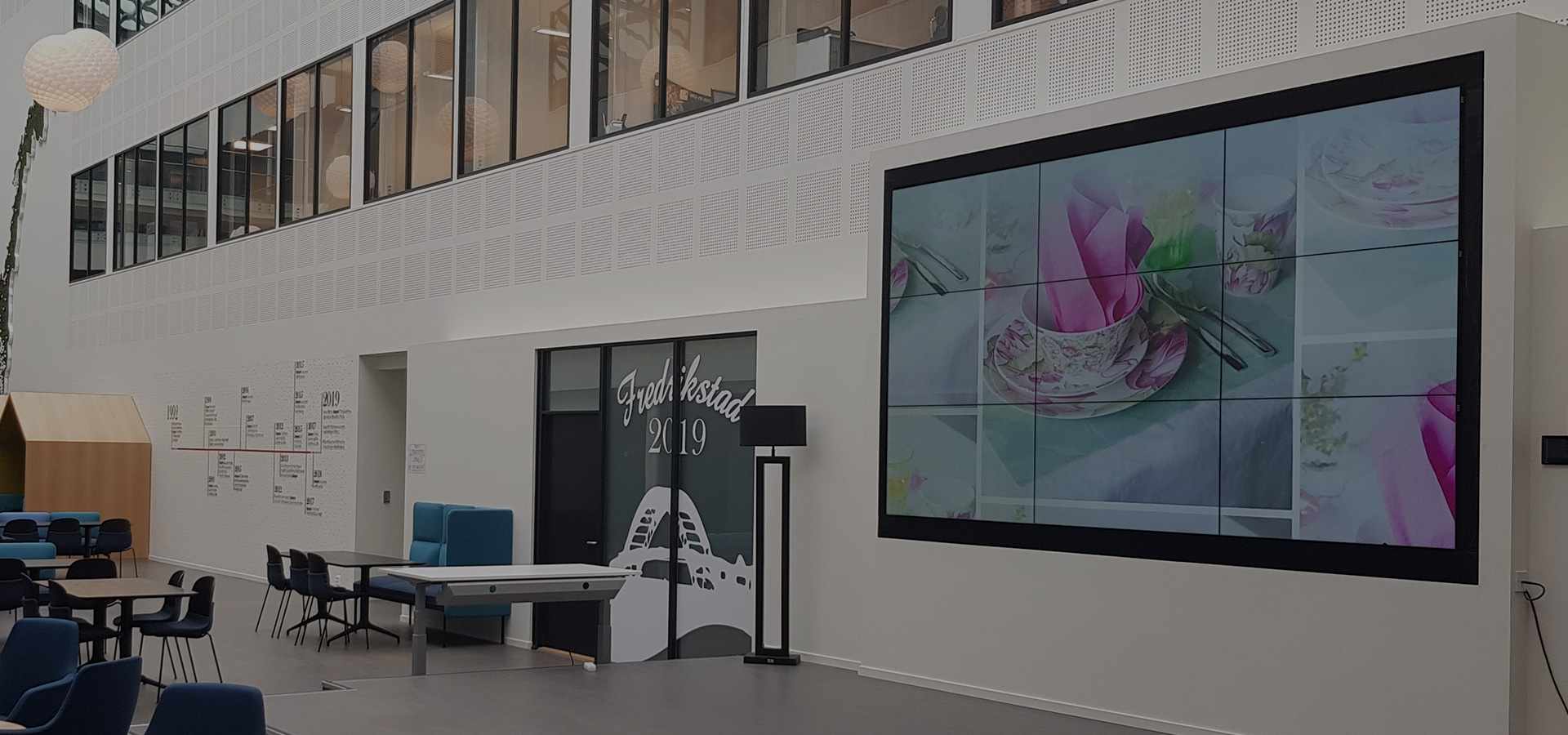






.png)